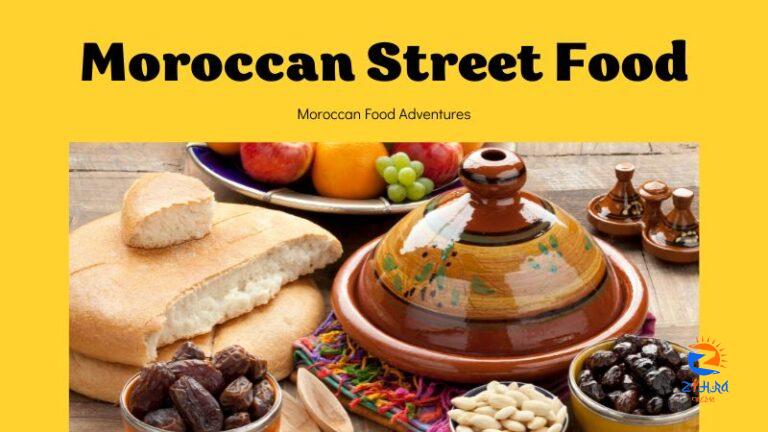
[ad_1]
Let’s dive into the world of Moroccan street food, where the streets come alive with the sizzle of grills, aromatic spices, and vendors calling out to hungry passersby. This post explores Moroccan street food, its cultural significance, and its appeal to both locals and visitors.
This has a special place in my heart because my husband and I run a food tour business in Marrakech and Essaouira. It has always been something we have wanted to share with people who feel intimidated by navigating Morocco’s street food scene. So, that’s how the idea for Moroccan Food Adventures was born!
If you want to explore street food when you’re visiting this post should help you get started.
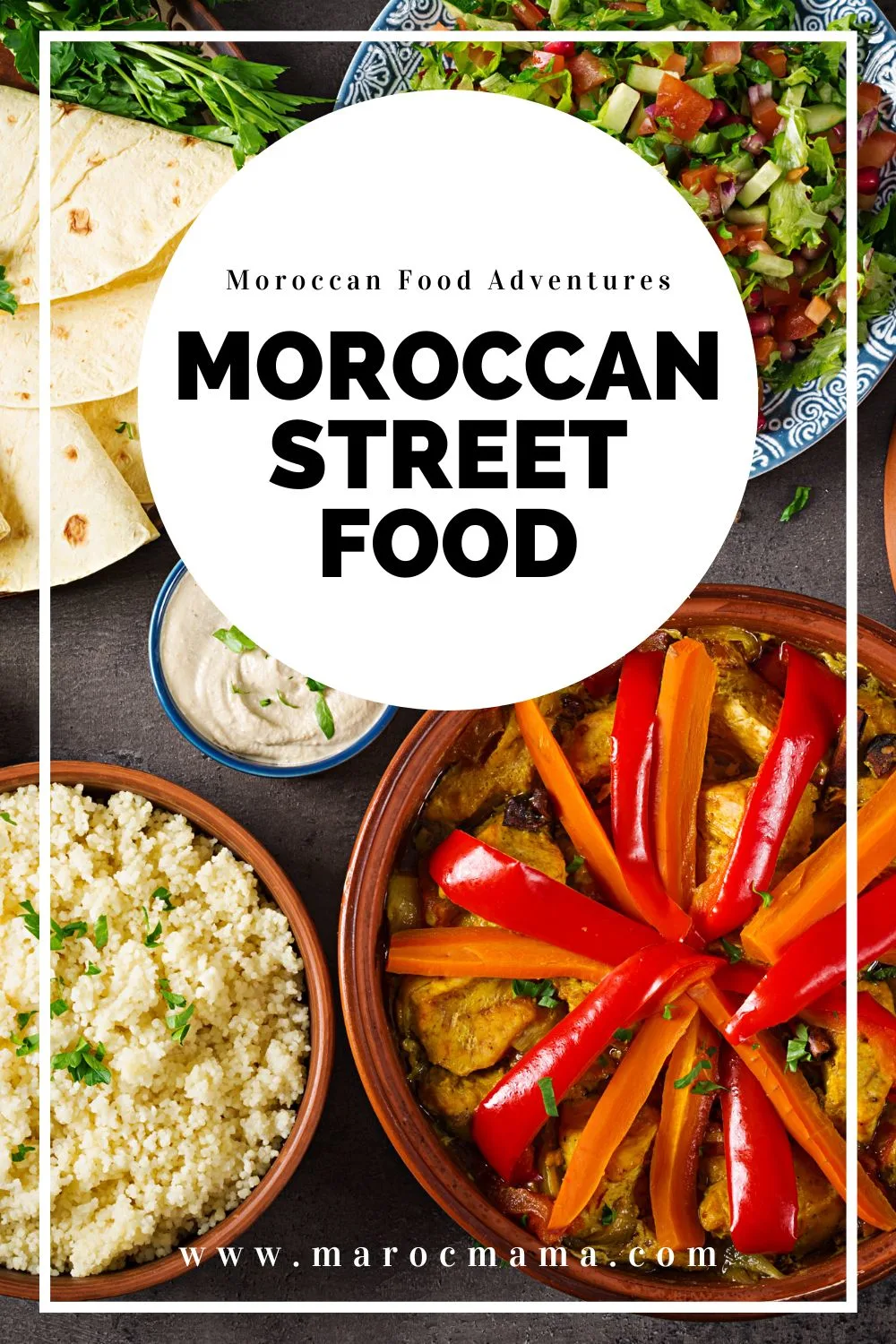
Moroccan street food is more than just a quick snack; it’s an essential part of the country’s food culture. The stalls and food carts along the streets serve as hubs of community and flavor. They attract a diverse crowd of Moroccans and tourists, all enticed by the delicious offerings.
Street food is diverse, with different regions offering their unique dishes. From grilled meats to sweet pastries, it mirrors the country’s culinary variety. In this post, we’ll take a closer look at the flavorful world of Moroccan street food and discover its cultural richness, one bite at a time.
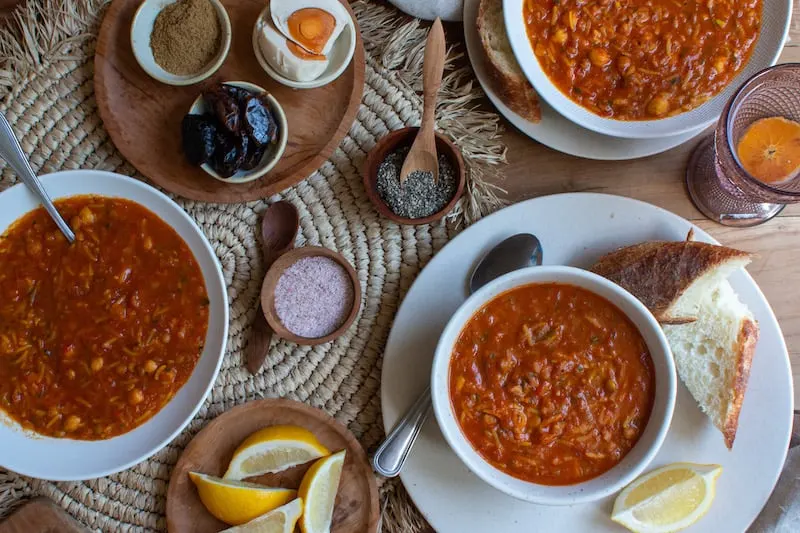
Harira: A hearty soup made with tomatoes, lentils, chickpeas, and various spices. It’s often enjoyed during Ramadan to break the fast. But you’ll also find street sellers serving up bowls of harira throughout the year. It can have meat in it so you’ll want to double check if you’re looking for a vegetarian option.
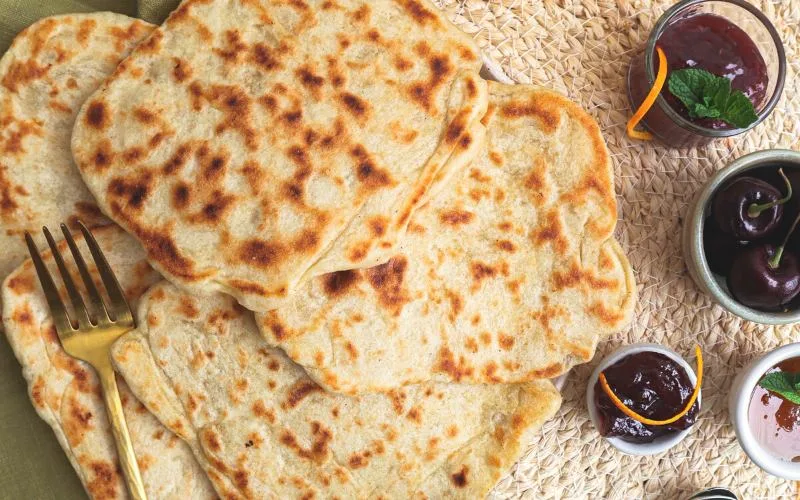
Msemmen: A square-shaped, flaky pancake that’s pan-fried and typically served with honey or jam. These are very typically sold during breakfast time and in the later evenings for snacks. They can be savory or sweet.
Rghaif: Similar to msemmen, rghaif is a type of Moroccan flatbread. This term can be used int different parts of the country for msemmen. These can also be savory, stuffed with spices and onions.
Melawi: Another bread very similar to msemmen but in a round shape. They’re flaky and served with honey and butter. You might also find people eating them with cheese.
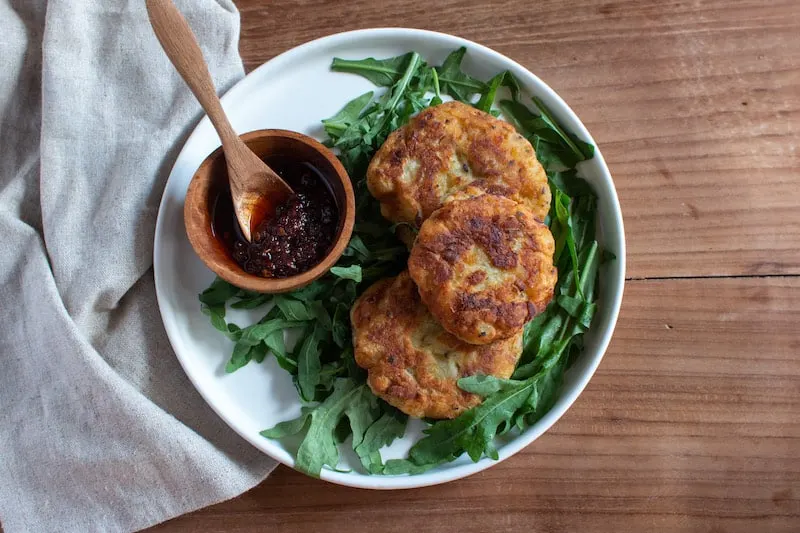
Maakouda: Deep-fried potato patties or croquettes, often served in a sandwich or as a snack. You won’t find maakouda everywhere, though they’re very common in cities like Essaouira. Often they’re made at home. I highly suggest if you do find them sold on the street to give them a try!
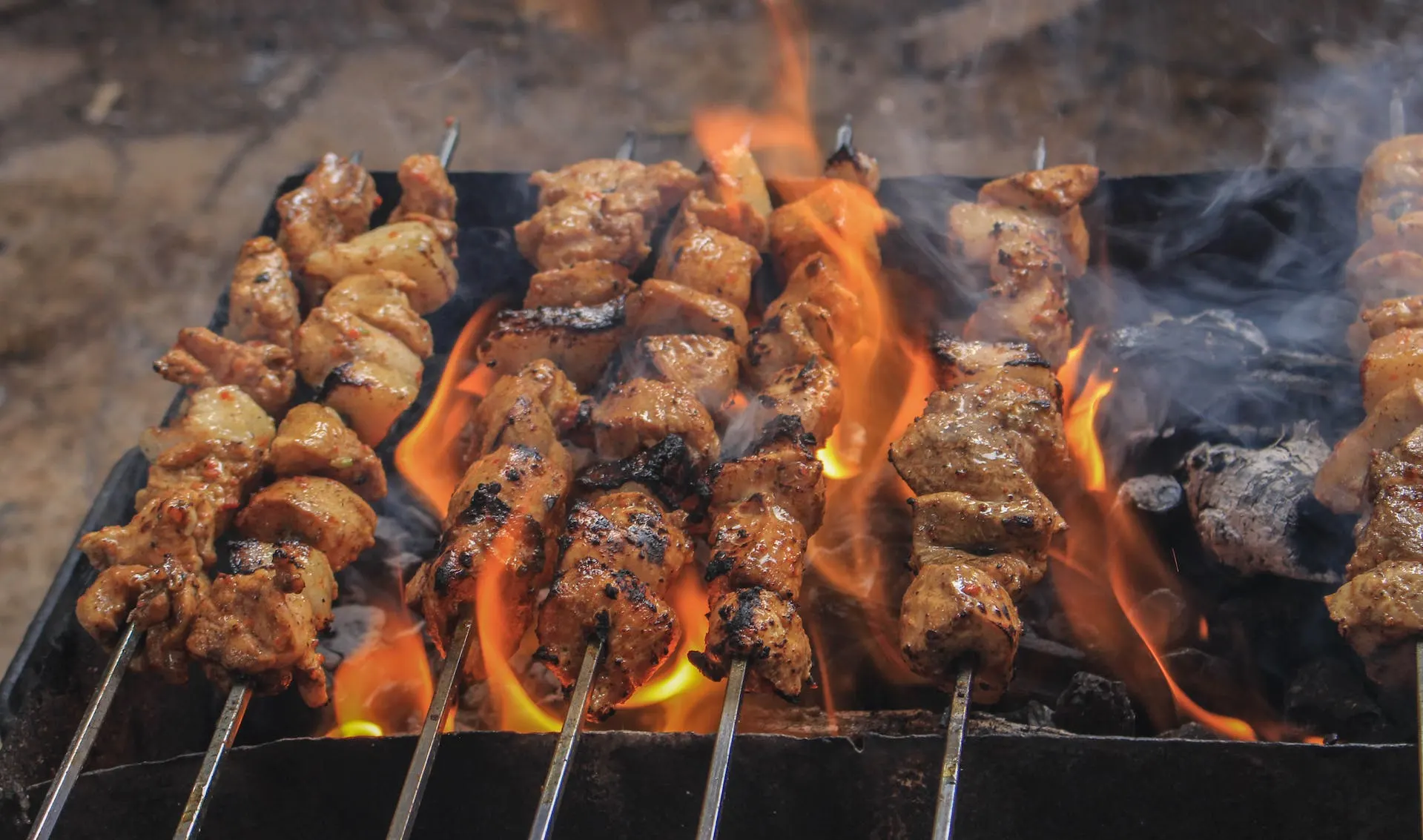
Brochettes: Skewers of grilled meat (beef, chicken, or lamb) seasoned with spices like cumin, paprika, and garlic.
Another variation of brochettes is called boulfaf. It’s grilled liver served with cumin and salt.
Beef Kefta: Ground meat skewers seasoned with spices and herbs, then grilled to perfection.
Moroccan Sausages (Merguez): Spicy sausages made from beef or lamb, grilled and served in a sandwich.
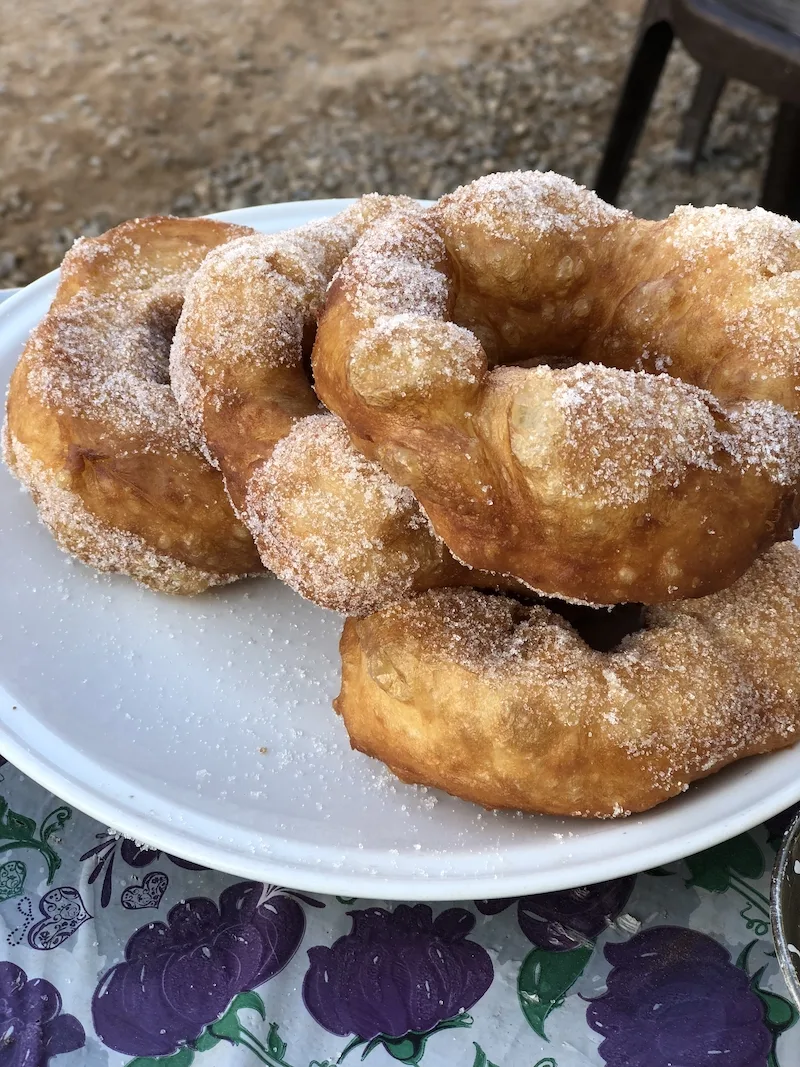
Sfenj: Moroccan-style doughnuts, deep-fried and dusted with powdered sugar.
Grilled Corn (Blébi): Corn on the cob grilled and seasoned with spices.
Moroccan Meat Omelette (Khliaa): A flavorful omelet made with eggs, preserved meat, and spices. Khliaa is typically dried lamb preserved in clarified fat. It’s a traditional way of preserving meat and used in a few ways. These omelets are really popular at breakfast time.
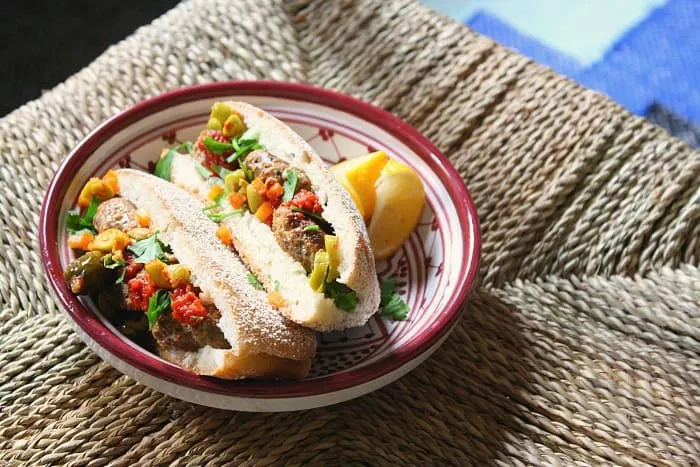
Sardine Sandwiches (Hout Quari): Grilled or fried sardines served in a sandwich with bread and various toppings like tomatoes and olives.
Chermoula Grilled Fish: Fresh fish marinated in chermoula sauce (a mixture of herbs, spices, and lemon juice) and grilled.
Snail Soup: A unique street food experience in Morocco, especially in the evenings, where you can try snail soup seasoned with herbs and spices.
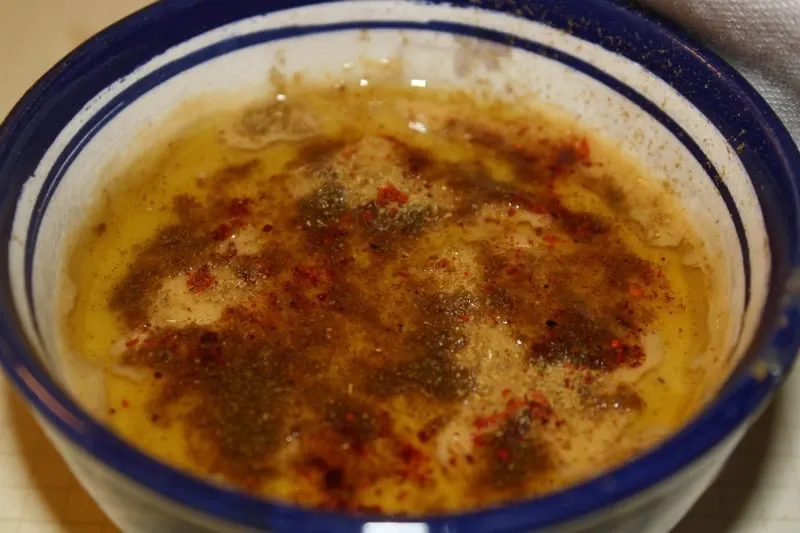
Bssara: Moroccan bssara soup is a hearty and flavorful dish made from dried fava beans, aromatic spices, and olive oil, often garnished with cumin and olive oil.
[ad_2]